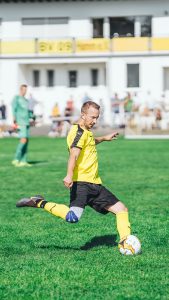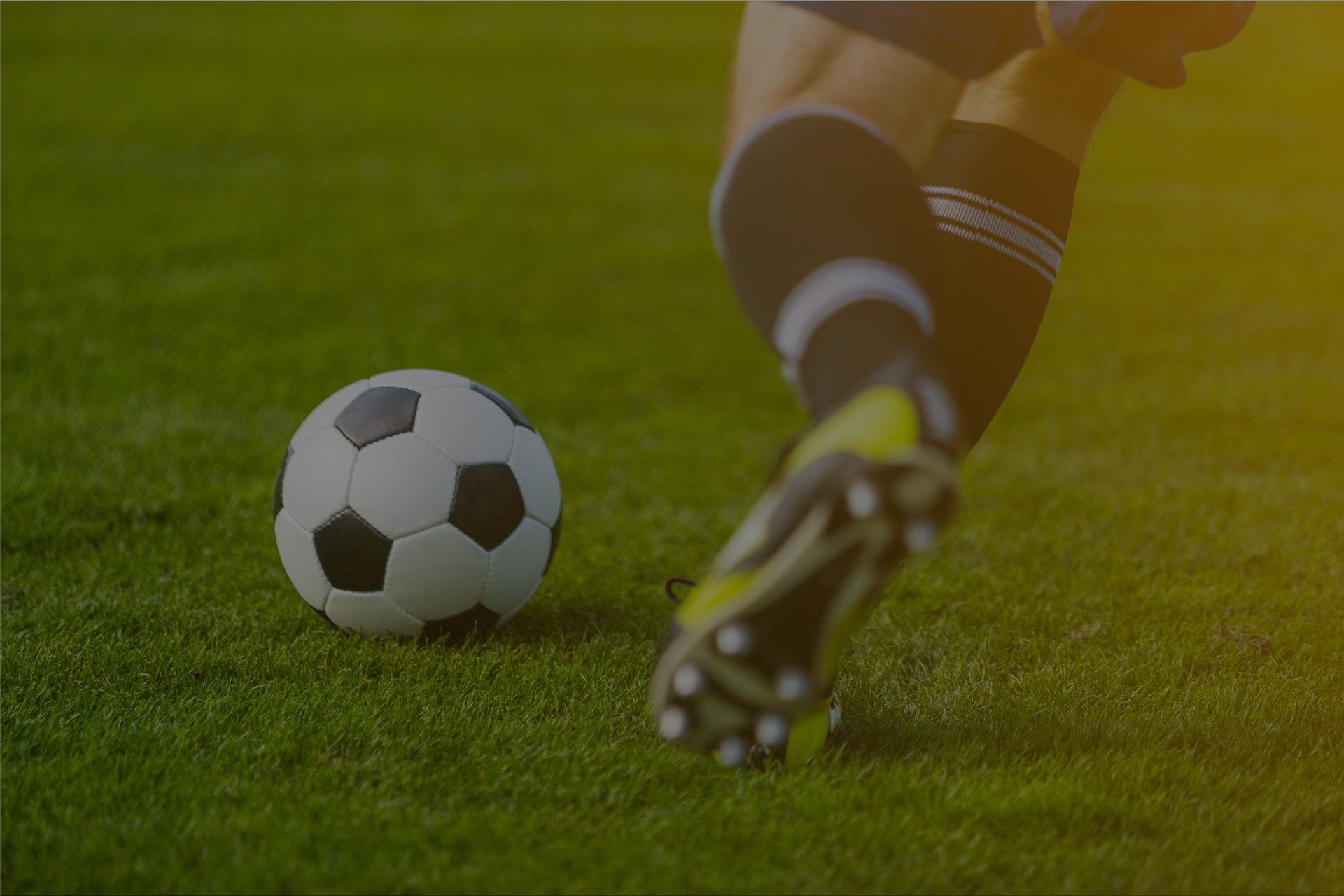Kicking occurs in a wide range of sports from soccer to American football, rugby, martial arts and many others. Most of the research done over the last several decades has focused on the mechanics of the kicking leg with minimal attention given to the stance leg. In addition to this narrow focus, the kicks analyzed in these studies are mostly soccer movements. The applicability of the soccer kick to other kicking sports is highly generalized, and should be taken with a grain of salt. What is clear, is that joint velocities and movement timing affect performance – and when the performance goal changes (speed, distance, accuracy), whole-body kinetic and kinematic strategies adjust.
The Kicking Leg
Research has shown that having an effective kick is primarily the proximal to distal sequencing of the leg segments. This is predominantly analyzed in one plane of movement – the sagittal plane. The flexion of the hip and the extension of the knee. Specifically, the hip extends backwards as the knee flexes. Then as the hip flexes forward, the knee continues into further flexion, holds that position for a moment, and then begins to extend before the hip reaches maximum flexion angular velocity. Knee extension then reaches maximum angular velocity at the time of ball contact.
This whip-like sequence maximizes foot speed at contact, which is associated with ball speed. The whip becomes most effective when the movements and velocities of the joints are timed appropriately. Specifically, sooner initiation of knee extension after the hip begins flexion seems to increase ball speed without any marked increases in joint angular velocity. This demonstrates a coordinative skill that allows the shin to maximize the momentum it gains from the thigh. Timing is everything.

The coordination sequence described above is important, however, movements in the frontal and transverse places are largely ignored. But using your eye or even high speed 2D video, how can you tell how much your leg is rotating or adducting? Why is it important?
The knee: Although we think of the knee as a joint that only flexes and extends, it can also flex laterally and rotate passively. Too much of this movement is typically where we see injury occur, so it is important to know what kind of extra movement you are experiencing at the knee.
The hip: The hip is a ball and socket joint. As such, it can move in all three planes. With this level of movement freedom comes great responsibility – stability! A skilled player can not only move their hip through a large range of motion, but they can also control their hip from moving in unwanted directions. Control at the hip is important in the kicking leg, but even more so in the stance leg.
The Stance Leg
The strength and stability required of the stance leg is substantial. The forces that the athlete gains from the ground are initially transferred from the stance leg through the body to the kicking foot. Therefore, it is not surprising that research has found the sagittal joint movements at the knee and ankle of the stance leg to be significantly larger than the kicking leg because you’re holding a strong position and controlling your stance leg as you move the rest of your body around this pillar you have created.
An interesting twist in the research is that the vertical ground reaction force measured in the stance leg has no correlation to kicking foot speed. The mediolateral forces DID show a correlation, but only with the dominant leg.
The postural balance of the rest of the body, in addition to the strength and stability of the stance leg is highly correlated to coordination and skill-level.
Try this:
With your younger or less skilled players, have them hold onto a rigid support on the stance leg side. Providing this postural assistance on the stance leg should significantly increase ball velocity and accuracy. This highlights the importance of balance and stability in performance.
What Can Athletes Do?
Get measured! Find out how you are really moving! Using 3D motion capture and force plate technology, we can measure performance mechanics and balance to discover the real strengths and weaknesses that are hindering the development of athletes of all skill levels. The unique timing and speed requirements of various kicking skills are precise and make an enormous difference in performance. Uncovering unique postural, balance, and mechanical inefficiencies in athletes allows trainers to design programs to maximize improvement in a shorter amount of time.






